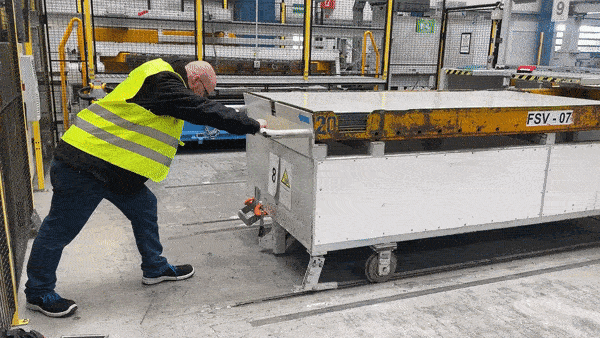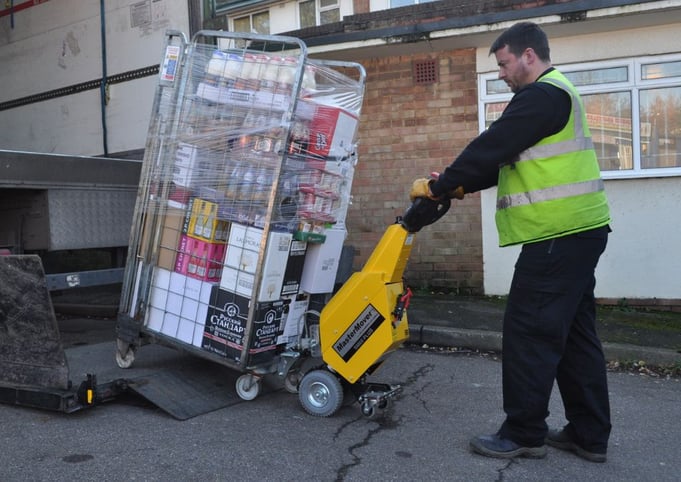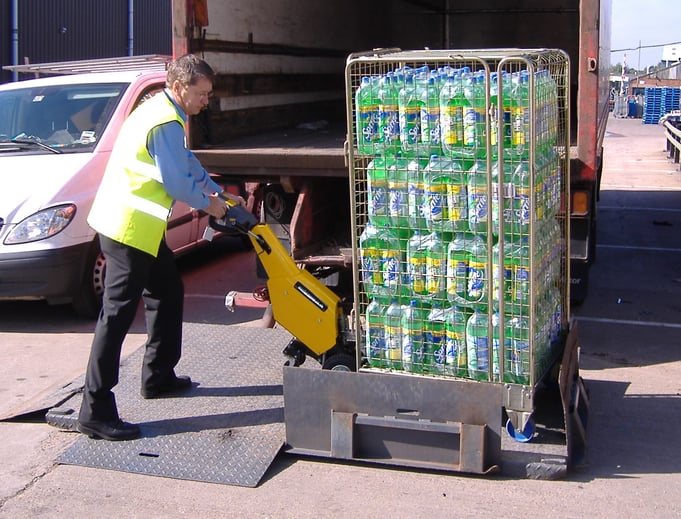Taking Control of Manual Handling

Workers in the facilities management sector are often asked to move heavy wheeled loads - but pushing, pulling and dragging can pose serious short term and long-term risks, as MasterMover's Lizzy Butterfield explains.
Protecting the well-being of staff while also boosting operational efficiency is a dilemma faced across the facilities management sector. From hotels to apartment blocks and hospitals, the everyday demands of moving often difficult, awkward and heavy loads simply can't be avoided. As a result, the stresses and strains associated with manual handling are sometimes viewed as an inevitability rather than as a factor that can be eased or even removed altogether.
Moving a bin is one example of the type of daily activity that can, over time, cause serious issues. For instance, a 1100-litre commercial Eurobin - a common sight in many workplaces - can hold up to around half a tonne in weight. Even when the floor is flat and smooth this can be a challenge, but when there are slopes to navigate, the effects of constant pushing and pulling become magnified.
According to figures from the Health & Safety Executive (HSE), around 5,000 workers in the waste sector suffer from work-related ill health each year. Of the 1,598 non-fatal injuries reported through RIDDOR in 2019/2020, 42% were injured while handling, lifting or carrying.
It's the same pattern in catering, hotel and hospitality environments, where manual handling covers a wide variety of activities such as carrying, pushing and pulling. In hospital and healthcare settings too, staff are expected to move everything from bins to trolleys and laundry cages.
Indeed, manual handling accounts for more than a third of all workplace injuries. This includes long-term musculoskeletal disorders (MSDs) such as injuries to arms, legs and joints, and repetitive strain injuries to the back and neck. That's not to mention the short-term dangers of moving a heavy, wheeled bin, trolley or cage. A load running out of control when being transported up and down slopes, around corners or in tight, congested areas is an obvious potential hazard.
The law, meanwhile, is quite clear about the obligations expected of employers with regards to safe working practices and manual handling.
The Manual Handling Operations Regulations require organisations to avoid any manual handling operations which involve a risk to health so far as is “reasonably practicable.”
If it is not practicable - as would in reality be the case with many tasks undertaken by busy staff in the facilities management sector - employers should conduct a manual handling risk assessment to identify how risks are caused, so that each factor can be addressed and steps taken to control any possible danger.
Preventative measures are always the best way to stop accidents happening in the first place. Staff training is of vital importance and in addition, the HSE recommends the use of handling aids where appropriate.
Using a MasterMover electric tug to securely attach to a load can certainly help. Thanks to a combination of power and traction, the electric tug is able to take the strain - so all a single operator has to do is effortlessly guide the load into position. It's an easy, controlled movement that allows for the safe transportation of the heaviest of loads even up and down slopes.
One property management provider using an electric tug in this way is the Alexander Faulkner Partnership. The company approached MasterMover when looking for a way to safely move bins up to street level from an underground carpark in a large apartment building. Previously, this had been a physically demanding job undertaken by more than one employee. Today, an electric tug allows a single member of staff to easily move the bins without strain or effort.
Versatile and user-friendly, MasterMover electric tugs are compatible with the full range of bins on the market while other machines in the product range are ideal for moving trolleys, roll cages and laundry cages. Designed to reduce or even eliminate manual handling completely, the tugs also allow an operator to have complete visibility when moving.
What's more, there is no compromise between safety and achieving greater operational efficiency. By using an electric tug, businesses can cut down on wasted time and other non-value-added activities – freeing up staff to concentrate on other tasks if needed.


